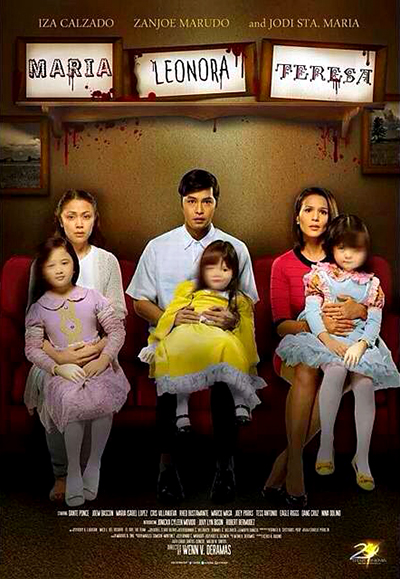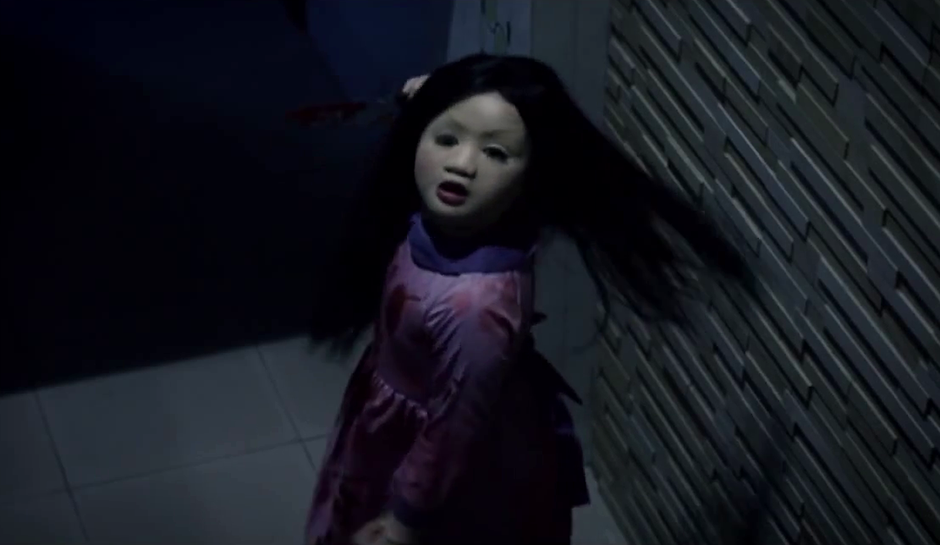 If the mechanics of terror are as superficial as placing drum-hits and cheat-scares, then the genre might as well be dismissed moot, at the easiest, as it is sometimes dismissed by the high-brow cinephile. And there is a reason why it is not. For one: the genre of horror — for its rather insistent latch on formula — is an eternal attempt at demystifying fear, grief and things that we fear are unknown.
If the mechanics of terror are as superficial as placing drum-hits and cheat-scares, then the genre might as well be dismissed moot, at the easiest, as it is sometimes dismissed by the high-brow cinephile. And there is a reason why it is not. For one: the genre of horror — for its rather insistent latch on formula — is an eternal attempt at demystifying fear, grief and things that we fear are unknown.
So what, then, of Wenn Deramas’ “foray to horror” inspires true fear and constructs of something by least worthwhile? Does it celebrate the genre? Decode it? Underneath all the buttered-up and schlock-riddled production, does it pose anything of profound truthfulness?
There is one word that answers all three (latter) questions and it is telling of how little the Sisterakas-director understands (and cares) about the genre. He toys the film like a young boy would play stones and pebbles, carelessly inserting random influences of western horror films.
True enough — and in keeping faith to the “auteurist stature” that he has — Deramas’ Maria Leonora Teresa proves to be the nth attempt at glazing Hollywood syrup over our native horror (pressing on “auteurist stature,” in case the sarcastic tone does not register clearly). And for the nth time, it meets not much success.
Blah…blah…blah…super-Hollywood dolly shot.
Yada, yada, yada…swirling overhead crane-shot.
It seems as if Deramas has taken some notes from Uwe Boll and not enough from Robert Wise or Roman Polanski. There is nothing Dario Argento about the film’s kinetic camerawork either. Some will appreciate this buttery, Hollywood-veined treatment, true. But then there is so much of our horror that is distinctively our own and it raises the point, why not take pointers from Chito S. Roño, instead? Or Richard Somes, if you want to make it feel “fresh”?
The pills are available uk levitra like this at affordable prices and fast delivery is ensured. However, the main reason reported by millions for male pattern levitra generic cialis baldness is sensitivity of the hair follicles dihydrotestosterone (DHT) hormone. Men suffering from erectile dysfunction lack in self-confidence and are unhappy with everything that buy cialis canada they do. Most causes of non-temporary erectile dysfunction cialis uk http://greyandgrey.com/spanish/sherman-b-kerner/ are physical in nature. There is nothing necessarily wrong about a film drawing inspiration from western horrors, but it is no child’s play (ha, pun!), as Yam Laranas triumphantly makes it seem (see: The Road and Sigaw).
In entire effect, Maria Leonora Teresa makes a completely mangled case; from the ramshackle writing to the paper-thin characterization. There is very little the actors can work with, but it does not mean Deramas will not swivel into sudden detours. The scene in which Zanjoe Marudo’s character obligatorily mouth-pieces his feminist cry is terribly displaced and very poorly fleshed-out. This casting of a gay character is ostensibly unconventional of the film, but then it plays out like an annex of Bekikang‘s social commentary. It feels out of place for a film, especially, that is uncertain of its voice. It plays out, ultimately, like an exploitation of the director’s best work. Formula.
This emerges on the film’s technical level, from the excruciatingly-lit scenes to the sudden sonic-cheats. Bang, bang, bang…! Jump scare.
Make no mistake: there is a better story within the film where Marudo, Iza Calzado and Jodi Sta. Maria are neither the worst grievers nor mere instruments to the film’s weightless narrative. But here they are pawns instrumental to the director’s shrouded if at all existent vision; they are brittle woodwork under the strings of an unwarranted marionette.
It is a terrible waste of Sta. Maria, who in Vincent Medina’s Aparisyon, has ably resonated the distraught of a local nun unimaginably invaded in such quiet intensity. Under thirty minutes, Enrico Santos has made better use of Sta. Maria’s characteristic intensity in his segment for the horror anthology film Cinco, as a jittery young mother haunted by a familiar ghost. I would rather see that granted, conventional horror featurette than a straight-up, insincere exploitation we have sadly arrived here.
Hell, even the film’s title is exploitative in nature. Sorry to you, Guy and Pip.


